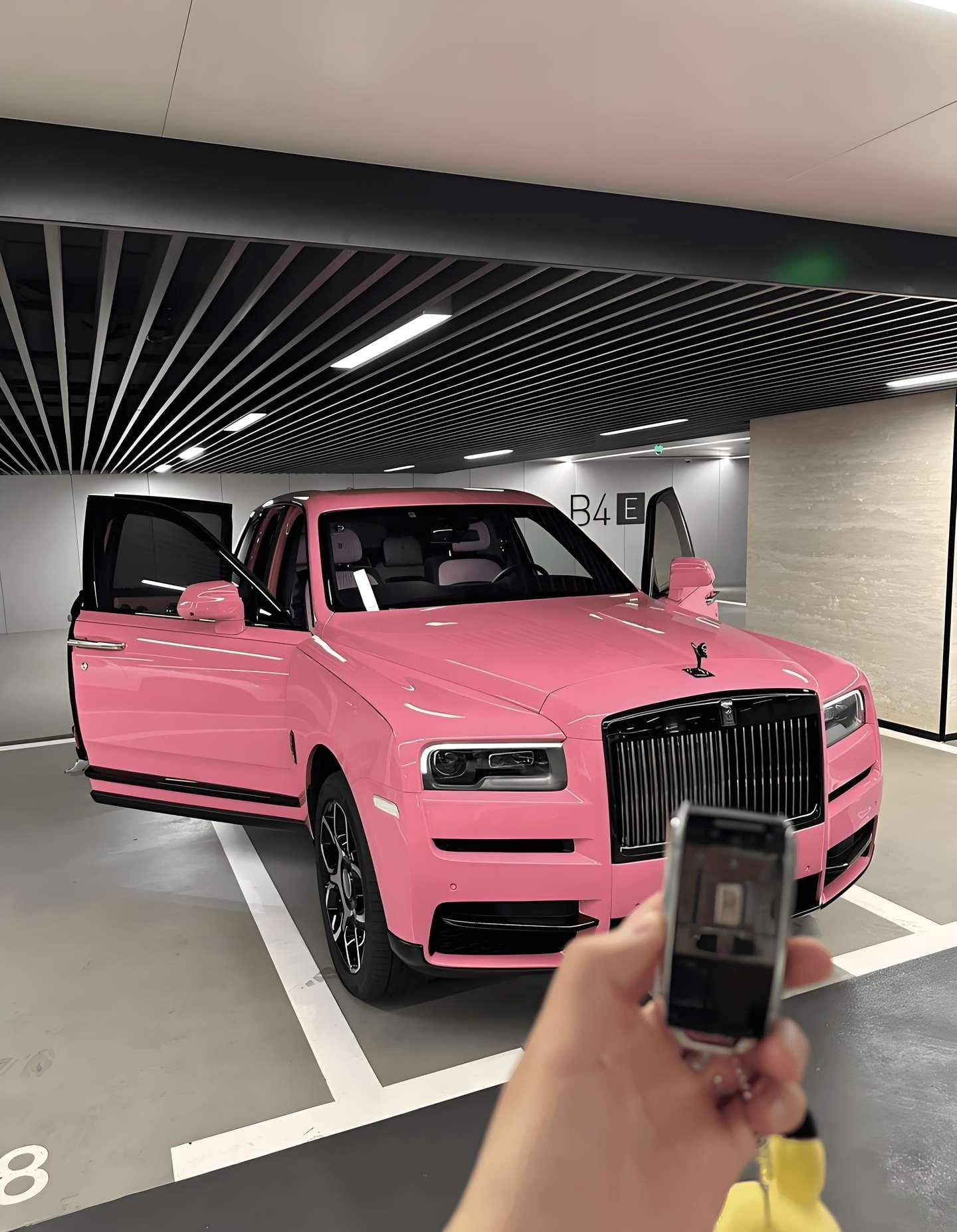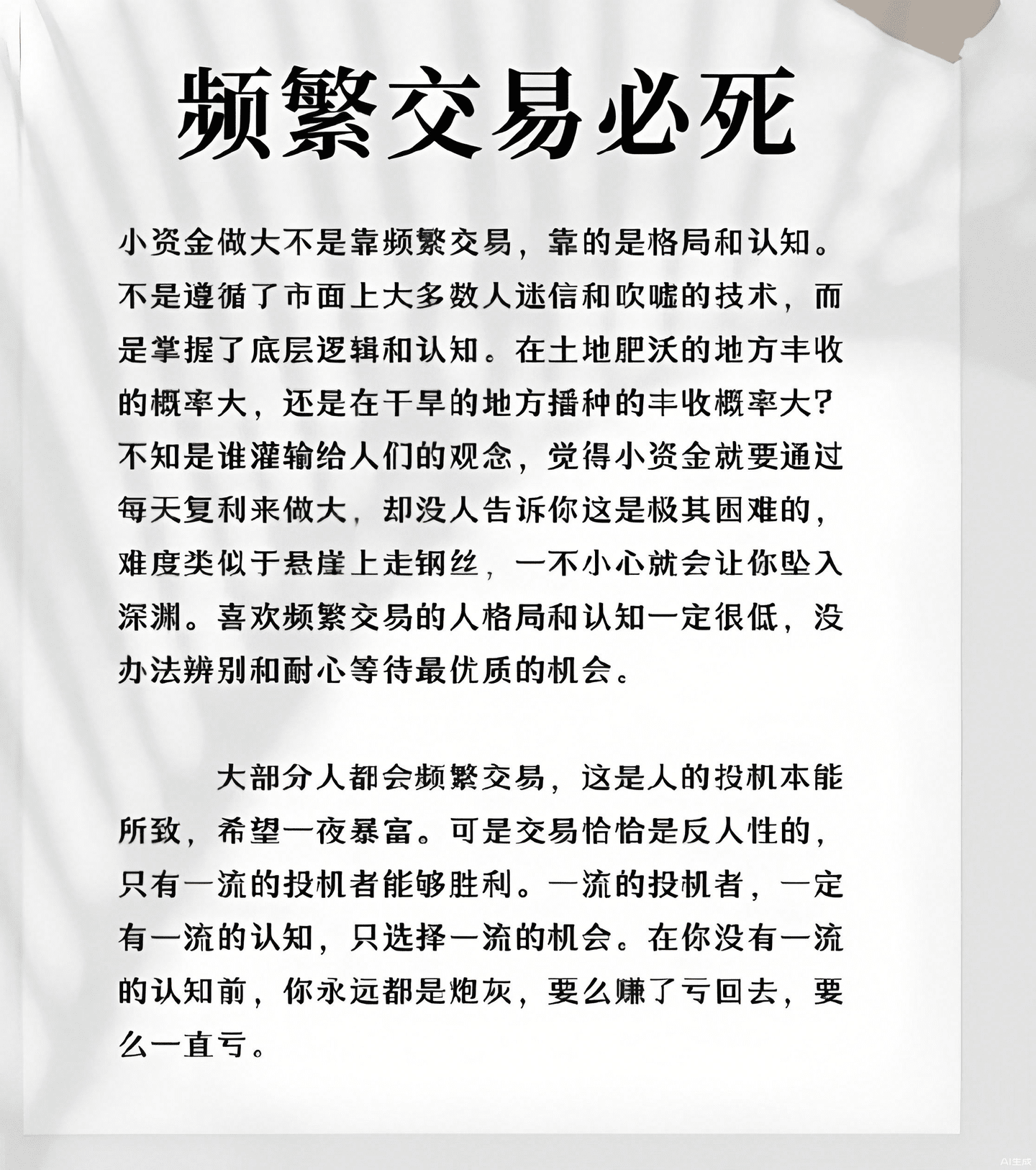I lost 800,000 and then climbed back little by little with 2,000U! Now I support my family by trading cryptocurrencies, with over 34 million in my account!
That year, during the bear market, I lost a total of 800,000 yuan. I was still holding on during the day, but it collapsed at night. My friends circle was cleared, my address book was silent, no one understood, and I was left spinning in circles.
During that time, I really wanted to give up because I felt that the cryptocurrency world was too far away from me.
Until one night, I saw a sentence: "Loss is just the beginning, messing up is the end."
At that moment, I was awakened by a hammer
I took the last 2000U in my hand as my last bargaining chip, not to gamble, but to start over completely.
I started to review each trade and summarize each point, and then I realized that the reason I lost money was not bad luck, but that I was not "trading" at all.
No stop-loss, all-in with a heavy position, chasing rising and falling prices, frequent currency exchange, and operating based on emotions!
To put it bluntly, I am not making a strategy, but guessing the size.
This time, I only do two things: steady the pace and strictly enforce it.
2000U is divided into three parts, one for defense and two for operation.
Only trade with high certainty, take only 5%-10% profit from each order, exit when there is profit, cut immediately when there is loss; if there is no signal, short position and wait for opportunity
In the first week, it increased from 2000U to 2900U
In the second week, the account reached 4300U
In the fifth week, the account successfully exceeded 20,000+
That night I sat in front of the computer in a daze, not because of how much money I made, but because I felt for the first time: I was really starting to turn things around.
No insider information, no experts to guide me
It is the most "dumb" rhythm playing method - don't be impulsive, don't hold a large position, only do the market that you can understand
Most people lose money because of one word: chaos
The rhythm, emotions and plans are messed up, and in the end, the more you do, the more you lose.
In fact, as long as you keep a steady pace, small capital can also take off
How do I choose the market and identify opportunities? Which markets to trade and which to sell?
I can only say one thing here, the rest is hard to explain and no one believes it
Finally, I would like to share a sentence that I like very much: One person can walk fast, but a group of people can go far.


When it comes to cryptocurrency trading, profits are made through knowledge and discipline, and behind every penny is a lesson learned through blood and tears!
This market always repeats the same secret: 90% of the leeks are watching the news to speculate on cryptocurrencies, 9% of the smart people are watching the movements of the market makers, and 1% of the wolf-like players are using the daily moving average to dissect the market genes.
The first step: verify the identity of the moving average. Just think of the daily moving average as three old Chinese medicine practitioners with very different personalities - the 5-day line is the director of the emergency department, the 30-day line is a master of internal medicine, and the 60-day line directly moves into the expert clinic and sits in the armchair.
When the director of the emergency department suddenly becomes erect and jumps over the heads of two senior colleagues to feel their pulse and ask questions (the 5-day moving average crosses the 30/60-day moving average), this is a signal that the market is ready to enter the ICU for rescue. On the other hand, if the director of the emergency department slips and rolls off the chair in the expert clinic (the 5-day moving average crosses the 30/60-day moving average), don't hesitate, sell your position immediately.
Step 2: Establish a trading system to prevent brain heat
Now, put a sticky note on your trading interface and write in bold marker: When moving averages clash, retreat. When the 5-day moving average and the 30-day moving average are tangled like a twist, rushing into the market is like rolling the dice and guessing whether it will be odd or even.
A true hunter will only pull the trigger when the three lines are marching in the same direction.
Here's a counterintuitive fact: In the cryptocurrency world, where sharp rises and falls are commonplace, the simpler the daily moving average strategy, the more deadly it is. Just like a duel between true martial arts masters, there's never a need for fifty opening moves. A breakout of the 5-day moving average signals the drawing of the sword, while a reversal of the 60-day moving average signals the moment to sheathe it.
A basic logic: Your account is not used to gamble on the future, but to survive. As long as you are still in the market, there is a chance of a comeback.
Six life and death lines for retail investors to turn around: If you get one wrong, you are out
1. Stop-loss and take-profit orders are not just suggestions, they are mandatory orders.
If you make the right prediction but don’t take the profit, it will be a false hope; if you make the wrong prediction but don’t stop the loss, it will be the door to hell.
2. Don’t buy at the bottom or at the top; the trend direction is what counts.
Buying at the bottom and selling at the top is a gambler's behavior. The prudent approach is to follow the trend. Buying low does not mean buying at the lowest point, and selling does not mean selling at the highest point. It is enough to just take advantage of the middle part.
3. Rising without volume is an illusion, and looking back it is a trap
If there is no rise in trading volume support, it is likely that the main force is performing to the air. Don't be a scapegoat for the audience.
4. React within three seconds of good news release. Don’t chase high prices if you miss the first wave.
Market opportunities are fleeting, and if you are slow to act, you will have no choice but to take over. If you can't catch the leader, you can make a layout to catch up with the rise.
5. Take a break when the market is consolidating; don’t rely on luck to gamble on the market.
Ninety percent of the time, the market is volatile, and the main upward trend only accounts for a small part. Don't worry if you miss the main upward trend, the market will always come again.
6. A market crash is not a sign of despair, but a sign of opportunity.
The true bottom always appears at the time of greatest panic. When others cut their positions, you pick up the stocks. Those who make huge profits must be calm people.

Recently, many people have asked me how to roll over positions and whether it is useful.
What is rolling?
Rolling = using small amounts of money, making repeated attacks, and exploding funds in a wave of market trends.
Sounds like gambling? No, it's a combination of controllable risk management, high execution, and market judgment.
The key is two points:
1) The direction must be correct
Rolling a position is not a bet on fate, but a bet on your ability to understand the market.
If you make the right move, turning your position around is just a matter of time.
2) Discipline must be iron
Only part of the capital is used for fighting, and the rest is used for "resurrection";
If you make a profit, withdraw; if you lose, stop. Don’t be greedy, don’t be arrogant, and don’t act rashly.
Who is the warehouse suitable for?
• Small capital, but want to make a breakthrough with technology
• Willing to spend time observing market trends, reviewing trades, and executing
• Ability to be patient and resist temptation
The suggestions are:
• Set a goal: For example, if you reach 10,000 U, stop immediately
• Take out the profit and keep only a small position to continue playing
• Maintaining the results is more important than anything else
The three main reasons why contracts always get liquidated (be sure to self-check):
1. Unable to control oneself: watching the market every day, wanting to jump on the bandwagon when seeing fluctuations, and letting the market lead you everywhere
2. No plan: Want to make quick money, but don’t even have clear stop-loss and take-profit rules
3. Lack of self-discipline: They make plans, but forget everything when the market changes, and place orders based on emotion
There is only one ending: a margin call and everything goes back to zero.
It is not suitable for everyone, but if you can maintain calmness, have strong execution ability and accurate direction judgment, then rolling over is really the most likely way for ordinary people to turn things around.

Finally, I will share a ten-minute guide to understanding the core technology of cryptocurrency trading - a must-read for newcomers to avoid pitfalls
1. First, figure out whether you are investing or speculating
Many newcomers in the cryptocurrency circle call themselves "investors" as soon as they enter the market. It sounds high-sounding, but what you are actually doing may be "speculation."
The difference is simple:
• Investment: Holding for the long term earns dividends and long-term value returns, such as shareholder dividends and holding shares in high-quality companies.
• Speculation: short-term entry and exit, making a profit by buying low and selling high or selling high and buying low, which has little to do with the long-term development of the project.
If you want to invest, pick a project you approve of, give your money to the project owner, and then wait patiently without worrying too much about the ups and downs of the market.
But if you want to speculate in cryptocurrencies, you must face the reality - we are speculating and making money by relying on market fluctuations, not falling in love with the project.
2. How to read the market so as not to get lost
Since it is speculation, the goal is to understand price fluctuations and find opportunities from them.
There are many types of technical analysis, but the underlying elements all revolve around the four core elements of price, volume, time, and news. In essence, they are all studying one thing - human nature.
1. Price (K-line)
A K-line records the opening price, closing price, highest price and lowest price of a certain period of time.
• The upper and lower ends of the candlestick body are the opening and closing prices
• The upper shadow line is the highest transaction price during this period
• The lower shadow is the lowest transaction price
Notice:
In the domestic market, red generally represents an increase and green represents a decrease; while the market system commonly used in foreign markets and cryptocurrencies is just the opposite - red means a decrease and green means an increase. Be sure not to get it wrong when looking at the market.
2. Trading volume
The columns at the bottom of the trading interface represent trading volume. The taller the column, the more active the trading activity during that period. Trading volume, combined with price fluctuations, can help you gauge the true strength of the market.
3. Moving Average (MA)
Averaging the closing prices of several periods and connecting them with lines will give you a moving average.
• Short-term moving average crosses above long-term moving average → trend is bullish
• Short-term moving average crosses below long-term moving average → trend is bearish
Many traders make a living by relying on a moving average, and almost all complex indicators are derived from it.
4. MACD
A trend indicator that is slightly more complex than a moving average and can determine market strength and potential reversals.
• Short-term moving average crosses above long-term moving average → Bullish
• Short-term moving average crosses below long-term moving average → Bearish
• Special cases are “top divergence” and “bottom divergence”, which have a relatively high hit rate but are not suitable for volatile markets.
3. The truth about technical indicators
KDJ, BOLL, RSI, W&R... These indicators sound impressive, but they all cannot avoid one fact - their calculations are essentially mathematical, and mathematics cannot perfectly describe human nature.
I used to be obsessed with various indicators and wrote hundreds of quantitative strategies with a backtest accuracy of 90%. However, once the real market conditions came into play, the effectiveness began to decline.
Although some simple indicators have only a 60% success rate, they can cope with most market conditions when combined with fund management.
The same is true for many top quantitative trading systems—they have vast amounts of code and countless models, but their actual performance is far less stable than imagined. The reason is simple: human nature is the biggest variable, and any indicator can only approximate it, not fully predict it.
4. The correct way to open technical analysis
Technical indicators are not the holy grail, but they can help us:
• Filter out some uncertain market conditions
• Provide reference for buying and selling
• Make decisions more structured, rather than emotional
My suggestions are:
1. Choose 1-2 simple, easy-to-understand indicators and use them repeatedly.
2. Learn to identify trends based on price and volume
3. Don’t be fooled by fancy indicators. Indicators are only auxiliary, and execution is the core.
Conclusion
The key to making money in the cryptocurrency world is not to find an indicator that “always hits the mark”, but to understand the logic behind the indicator and combine it with fund management and execution discipline.
Remember this: market forecasts are not important, what is important is execution.